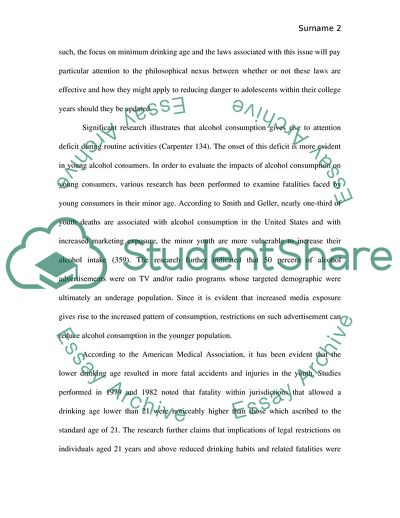Cite this document
(College Culture and Minimum Legal Drinking Age Essay Example | Topics and Well Written Essays - 1500 words, n.d.)
College Culture and Minimum Legal Drinking Age Essay Example | Topics and Well Written Essays - 1500 words. https://studentshare.org/philosophy/1822931-research-essay-about-drinking-in-college
College Culture and Minimum Legal Drinking Age Essay Example | Topics and Well Written Essays - 1500 words. https://studentshare.org/philosophy/1822931-research-essay-about-drinking-in-college
(College Culture and Minimum Legal Drinking Age Essay Example | Topics and Well Written Essays - 1500 Words)
College Culture and Minimum Legal Drinking Age Essay Example | Topics and Well Written Essays - 1500 Words. https://studentshare.org/philosophy/1822931-research-essay-about-drinking-in-college.
College Culture and Minimum Legal Drinking Age Essay Example | Topics and Well Written Essays - 1500 Words. https://studentshare.org/philosophy/1822931-research-essay-about-drinking-in-college.
“College Culture and Minimum Legal Drinking Age Essay Example | Topics and Well Written Essays - 1500 Words”. https://studentshare.org/philosophy/1822931-research-essay-about-drinking-in-college.


